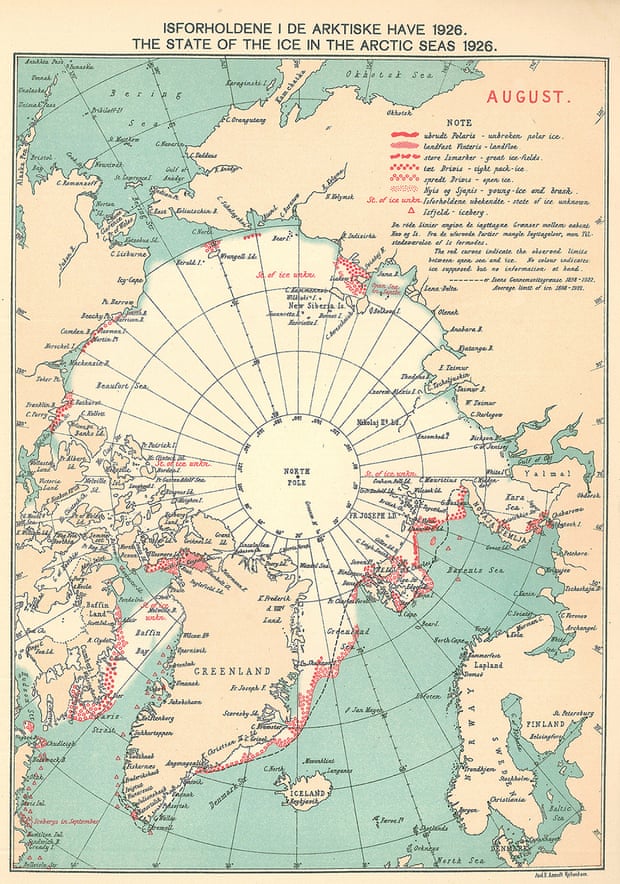
Scientists have pieced together historical records to reconstruct Arctic sea ice extent over the past 125 years. The results are shown in the figure below. The red line, showing the extent at the end of the summer melt season, is the most critical:

Time series of Arctic sea ice extent, 1850-2013, for March (blue line) and September (red line). Illustration: Walsh et al. (2016)
Arctic sea ice extent in recent years is by far the lowest it’s been, with about half of the historical coverage gone, and the decline the fastest it’s been in recorded history. Florence Fetterer, principal investigator at the National Snow and Ice Data Center, described the data reconstruction process in a guest post at Carbon Brief:
Prof John Walsh, now at the University of Alaska Fairbanks, and Dr Mick Kelly, from the University of East Anglia (now retired), were pioneers at retrieving data. They hand-digitised information from sources, such as aerial surveys, from the US Navy and UK Meteorological Office, and from the Danish Meteorological Institute’s yearbook maps (see examples from 1978 and 1979 – both pdfs).
Walsh, along with Prof William Chapman from University of Illinois, used these various sources to make monthly grids in Arctic and Southern Ocean sea ice concentrations, covering the period 1901-95.
However, as Fetterer explains, gaps remained in their records, which have now been filled into the NSIDC dataset using a variety of sources:

A Danish Meteorological Institute ice chart for August, 1926. The red symbols mark the location of observations recorded in ship logbooks. Illustration: Walsh et al. (2016).
It’s not just the area of ice-covered ocean that’s shrunk; in fact, the volume of Arctic sea ice has declined even faster. As illustrated in this video created by Andy Lee Robinson, about two-thirds of the summer sea ice has disappeared in just 36 years as the warming oceans have thinned the ice.
Previous research has also shown that Arctic sea ice is at its lowest level in at least 1,450 years, and the recent decline is mostly due to human-caused global warming.
This dramatic change may be causing ripple effects throughout the Earth’s climate system.
Posted by dana1981 on Monday, 22 August, 2016
 |
The Skeptical Science website by Skeptical Science is licensed under a Creative Commons Attribution 3.0 Unported License. |